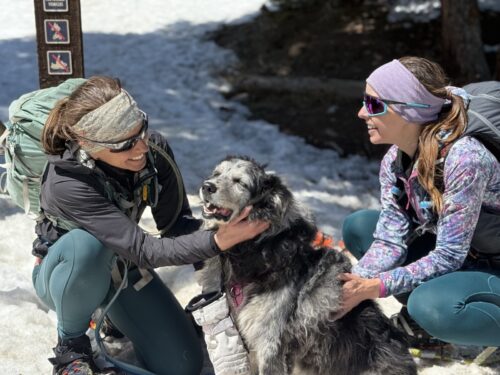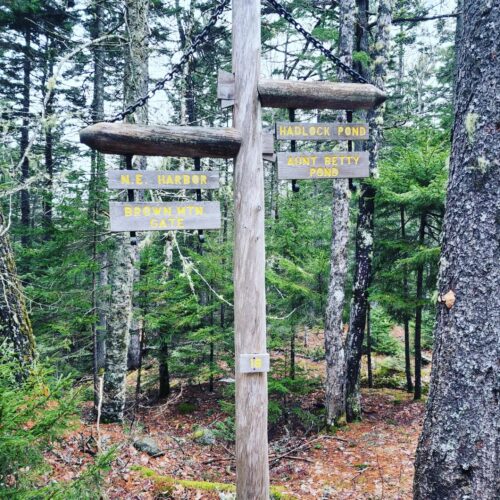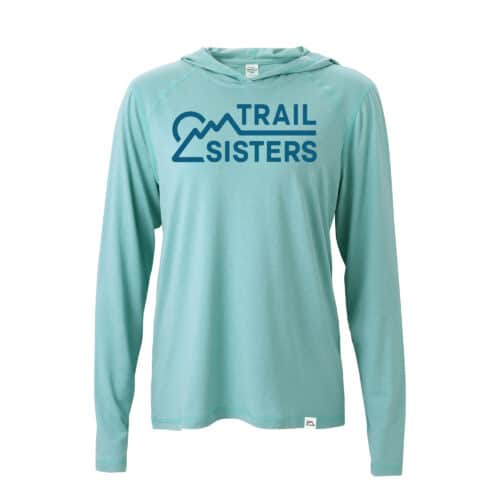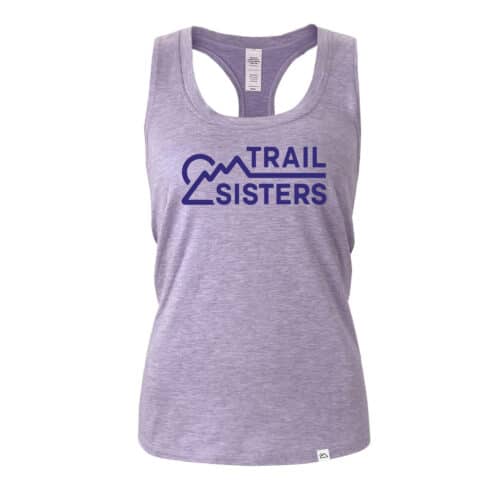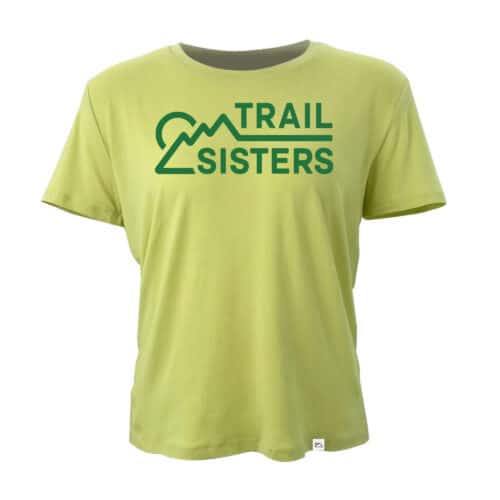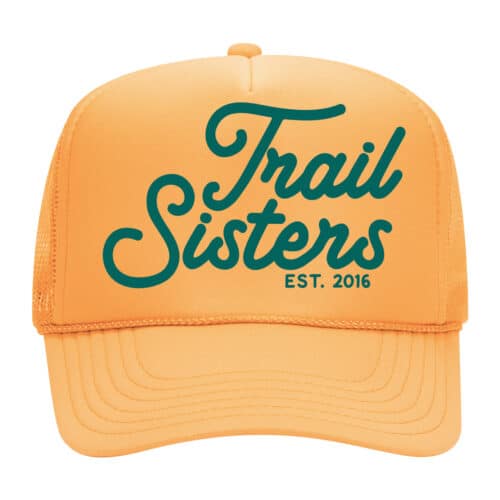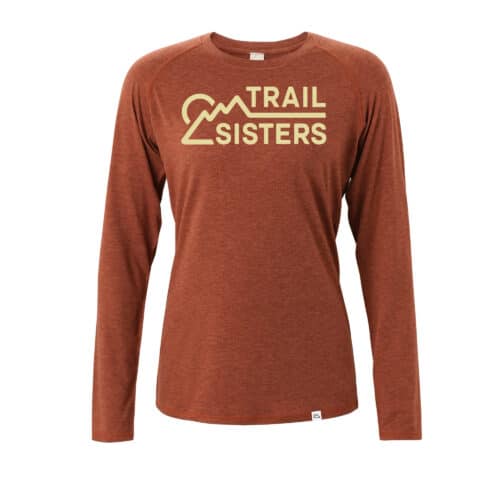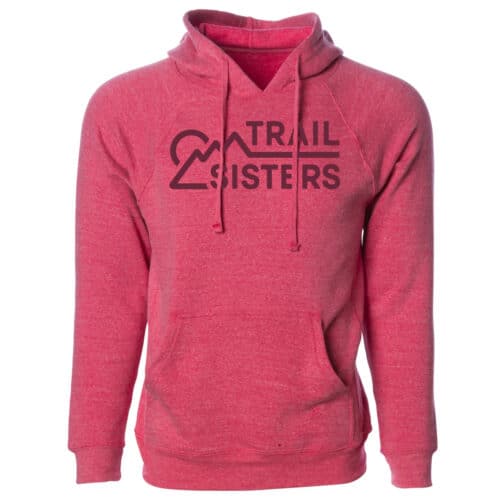Main Menu
Running Towards Joy

Kate is originally from South Dakota and has called many places home before finally arriving in Alaska almost 4 years ago. She somehow won the lottery by being able to work remote from a place she loves at a job that she loves. She’s been racing bikes on and off since 2013, she loves going uphill on skis and wishes she could take the lift down and only stays in shape for trail running in case someone asks her to go to the Grand Canyon. She thinks there is no such thing as too many sour patch kids, glitter, or cartwheels.
Share This Article!
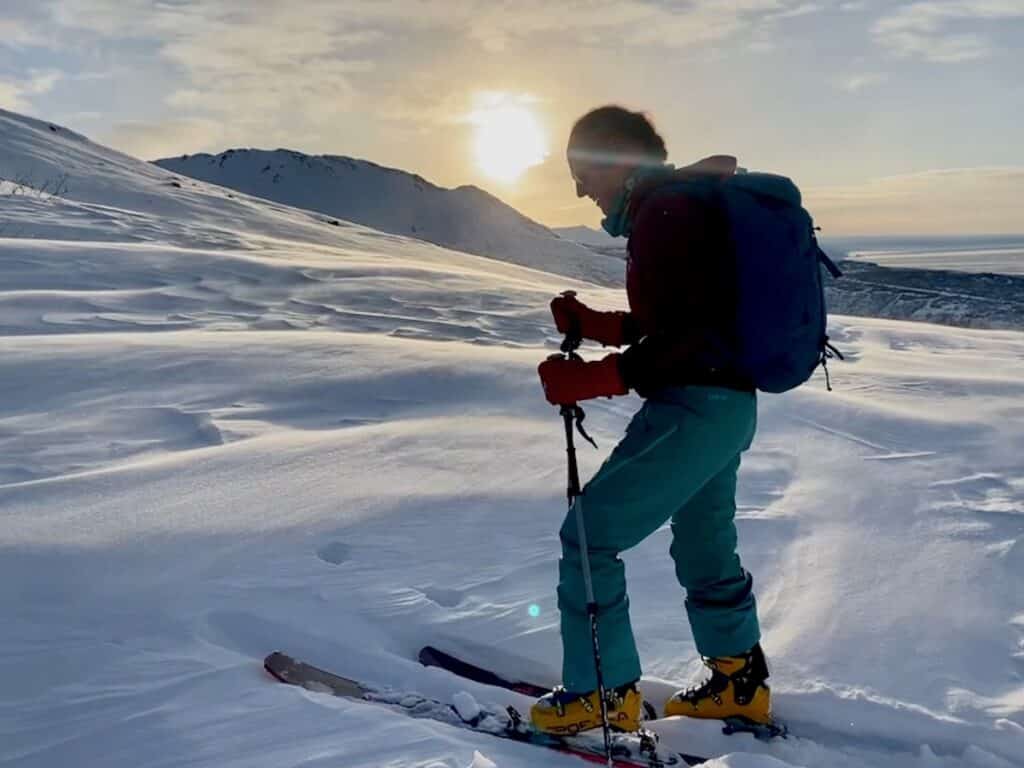

By: Kate Ginsbach
Before the COVID-19 pandemic, the outdoors was a place of joy and refuge. Over the course of the COVID-19 pandemic, however, my relationship with the outdoors changed as I worked as a COVID-19 researcher collecting daily data on the response to the pandemic, its spread, and its deadly toll. Looking back, it took a toll on me.
In Winter of 2019 I put on my first pair of skis in 17 years, skinned up to a 13,000 peak and skied down. In Fall of 2019 after moving to Alaska, sight unseen, I signed up for the Maah Daah Hey 150, a 150-mile mountain bike race with the intention of getting the course record. Looking back, that girl seemed so far away from what I had become. As COVID-19 unfolded my normal activity of endurance mountain bike racing went away as all the races got cancelled and my training became more and more unstructured. My risk mitigation became skewered as I took on new and ever-changing information about COVID and all the ways it could kill or disable you. As with the virus, being outside, you could do everything right and still die, you could do everything wrong and still live. The constant calculations of infection risk also included the constant calculation of all the missteps I could have in the outdoors. As I sought out new adventures to distract me from not training and racing, I lost all confidence in my ability to jump and land on my feet—I became acutely aware of all the ways people had died in water accidents, hiking, backpacking—all the ways I could suffer a similar fate. The risks felt cumulative with everything feeling more and more risky and I became a smaller and smaller version of my former self until all that was left was a shell and the only way I could describe myself was as a COVID-19 researcher. This girl who used to be multifaceted, tackling grad school, national championships, long bike rides, days in the mountains and up for any adventure was no more and instead was replaced by someone I barely recognized; she was more trepidatious, more comfortable to sit things out. It was a foreign landscape to navigate, and it pulled me further and further into an ever-increasing isolation.
With each new variant came a similar response, “I’ll get through this one and then will take a break and regroup and get back to being myself.” Then Omicron arrived and I felt depleted but set the goal of getting through January 2022 to see how our health systems could handle the response, how we would handle the response, how I would handle the response, then I would breathe, regroup, get back into yoga and get back on working towards becoming myself again.
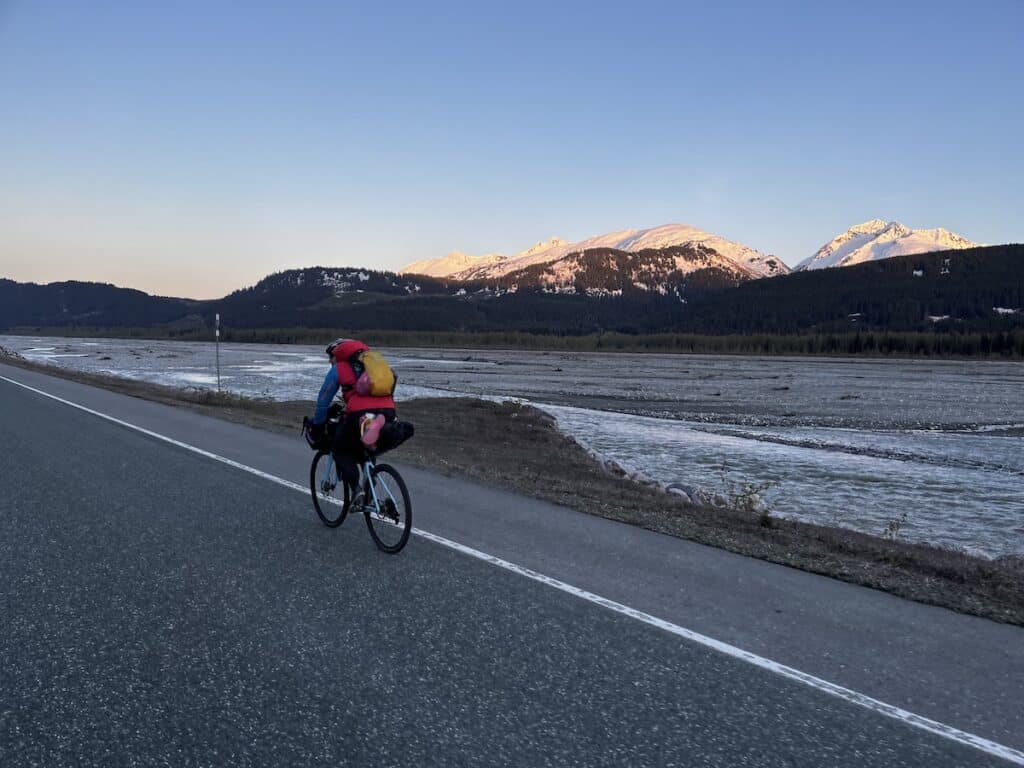
I didn’t make it till the end of January, instead on the third anniversary of getting a notification about a novel virus with pneumonia like symptoms emerging in Wuhan province, I experienced a panic attack. I thought I had had a panic attack before (after getting hit by a car while biking in college) but this one made that look like child’s play. This one was fierce and destructive, and all consuming. I had no idea what was happening as my mind ran wild with dark, terrifying thoughts remaining trapped there and shaking at the portal that had opened up into my mind and the monster that had been unleashed. I went to bed that night completely exhausted but thinking I would feel better in the morning, at least back to the shell I was. Instead, I woke up the next day with what felt like 3 years’ worth of anxiety coursing through my body. My mind raced with intrusive thoughts and my narrative of any self was gone. I had no idea who I was or who I had been. They say trauma disrupts the present, but it also cast serious doubt on any future I had envisioned and changed the sense of any past. Every memory brought up uncertainty and had me asking, “if that’s what I had really wanted”, “if that’s who I had really been.” During my panic attack I felt like I was experiencing dementia, or what I envisioned to be dementia, with disrupted looping on a timeline and feeling that time was out of sequence, and these thoughts only heightened my anxiety as one of my deeply felt fears is that I will get dementia and forget who I am—and here I was experiencing it. They say the thing you fear the most will hunt you down– now after running for so long it had found me. The impact of the panic attack and what it unleashed made me question so much: who was I, had I been living this authentic life; has anyone been living an authentic life; how do you know, how do I know, how do I trust myself to know. What if this darkness is who I really am and I haven’t realized. Well, much like fear, trauma is also a liar.
If the pandemic made me risk adverse before I was even more so now, I tip-toed around, fearful of startling my brain, feeling disconnected from my body, wondering if I would ever return to normal, or if this was the new normal. The disruption took me away from being able to have any real meaningful conversations. And while physically I was around friends and roommates, mentally I felt miles and miles away plunging me further into isolation. This time, however, I could no longer wait until it had passed for me to start dealing with it—it was not convenient, but reaching out for help was what I needed. I increased my weekly therapy sessions and was able to access my primary care doctor who put me on a low dose of anti-anxiety medication and beta blockers to get my mind and body to calm down. As someone who was used to having a resting heart rate of 45-55, it felt foreign to lay down with it pumping anywhere from 90-110. I thought of all the cortisol being released into my body and tried not to be anxious about the long-term damage that the accumulated stress would have on my body.
In January 2022, instead of starting to train for the Maah Daah Hey 150 that I had planned to tackle in September 2022, I told my coach there was no way I could sit on the trainer with how chaotic my mind was. I was left with only one option, to head outside. What had before seemed terrifying now seemed the only place for solstice. I found a ski loop close to my house where I would skin up, rip my skins, ski down, put the skins back on and head back up. I would do this loop as many times until the anxiety left my body and my heart rate was no longer panic stricken. There I would meet the girl I used to be, she was calm and at ease, and while she was fleeting, I knew she was there. I continued to seek her out. I kept getting outside with friends, but cautiously, I crept so slowly as the trust I had between my mind and body had been severed. Gradually, I found that those outdoor spaces helped to build that trust back up. I would remind myself “you did that whole thing and nothing bad happened”, or “look how you were able to respond”. But it was slow going. I was Nordic skating with my friend when I was overcome with fear that I would just plunge through the ice. Even though there were a multitude of cars set up for ice fishing, I couldn’t kick the irrational feeling that I was near death. I voiced my concern and my friend slowly led me the mile back towards shore. Being outside took more planning, I no longer had the confidence that I could just wing things; that I could grab my pack and go and have the confidence to figure it out as I landed—I needed time to mentally prepare and double check that I had everything and done everything that would prevent me from dying. But I kept going, kept seeking out those wild places. Being outside required me to be present and served as a good distraction as I could focus on the cold lapping my face, the snow under my skis, and if I didn’t pay attention, I would likely find myself off balance putting me back into the moment. The more I got outside the more I regained my voice that had been lost over the 2+ years. I could no longer just go with the flow as my mind and body made it necessary to tell others when I was uncomfortable or what I needed. Getting out with others helped me regain confidence in myself when they had confidence in me. I was able to reconnect with friends for a ski trip in Colorado who had missed most of my post-panic attack response. They assured me I was normal and skiing better than I had been. As I tiptoed around my mind, I could also feel myself getting stronger. I returned from that trip to Alaska with a new conviction and the day after my return, I was able to pull off racing in a skimo race—something that seemed unfeasible 2 months prior.
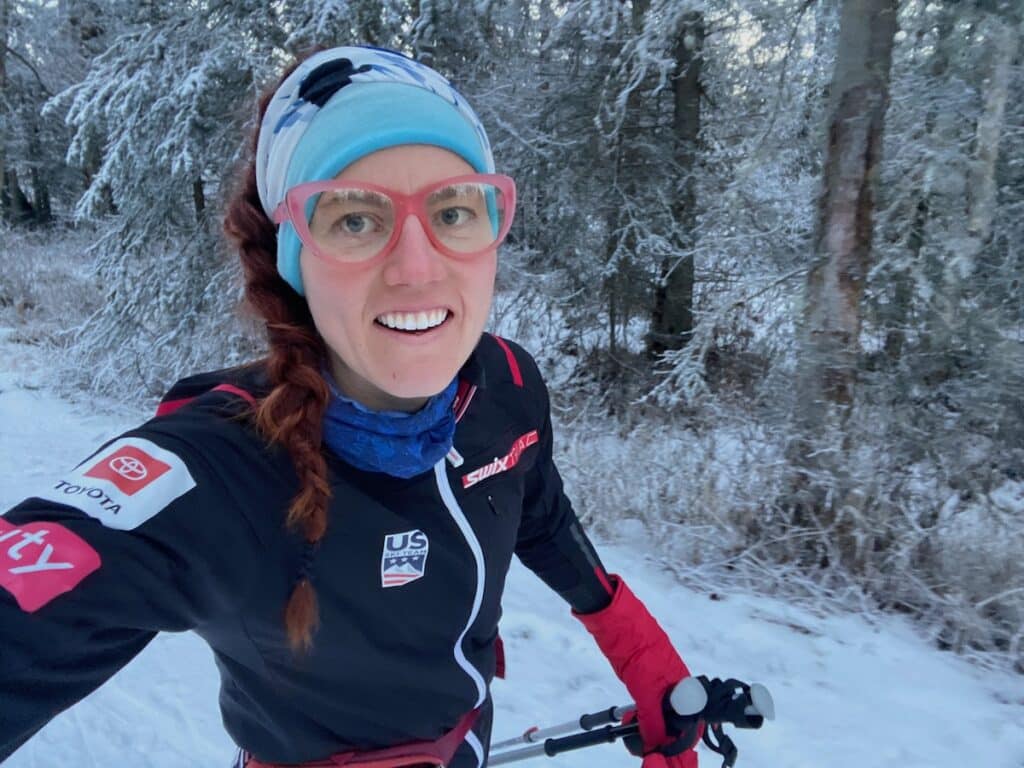
Through these outdoor places I saw the joy and light in me slowly start to return. My therapist suggested acknowledging when I felt joy and at one point last April on a pristine powder day, I was yelling it down the mountain so everyone could hear how elated I was to be alive, to still be alive. Unfortunately, it wasn’t as easy as having an off and off switch. I kept thinking I would wake up one day and I would be fully healed with no lingering trauma—but that didn’t happen, instead the journey was much like training for endurance mountain bike races: I saw progress and growth in areas where previously it seemed inconceivable. I started to trust my body more—when a friend took me out to learn how to jump turn on skis, I was on the top of a hill at a steeper angle than I would have liked. There was no real other option for me to get down except to maneuver this technique. After a few minutes of not believing in myself I flipped the narrative and committed. I got down and eased back into the turns, feeling the edge of the earth’s force on my skis and leaned into the flow. Five months into healing when I was asked by a friend to ride 600 miles to a further point in Alaska as she would continue to make her way down to the Tour Divide start, I didn’t hesitate when I committed—it was only later that I thought twice about being out for 5 days without any idea what all could happen. I trusted that my body would get me through it even if my mind how doubts—and she did. After that ride, I felt like I was making larger strides, I took confidence in my ability to be outside and to be able to respond and react without feeling triggered, as if I wasn’t so near to death. I rode through the summer, having some thoughts of at least starting the Maah Daah Hey 150, building on the miles and after three summers in Alaska finally did my first long ride on singletrack in bear country by myself as dusk was approaching—the whole time yelling, “I’m healing” until I finally believed it.
In September, I committed to race the Maah Daah Hey 150, telling my coach that I felt strong enough mentally and physically to at least give it a go—and taking the course record completely off the table. I had no idea what that race would bring but I believed whatever came my way I would handle it, even if it meant stopping. And I did handle it, after what felt like the longest night of my life, getting to that starting line felt like finally emerging into the light—and the lightness and love of others that had carried me the past few months had brought me here and I was so grateful for it. I spent just over 19 hours on the trail, eating donuts, jamming out to Florence and The Machine and squashing my doubts as they arose. I had some trepidation about meeting my thoughts in the dark but when that happened, I was instead greeted to a harvest moon and shooting stars, and the solitude that came from the stillness in my mind. I still had doubts and fears; what if I get a mechanical? What if I have a panic attack again? what if? what if? what if? but they were no longer all-consuming and were replaced with: you’ll figure it out like you have. And I did, I kept figuring it out and kept fighting, a fight that seemed like it had died so long ago but instead she was resting, staying hidden as if to protect herself from all the pain and trauma that had been thrown my way. She emerged just in time to fight and fight the whole way she did. I got to the finish line just as my headlight was dying—and I finally felt like I was nearing the end of something I never thought would even begin. I didn’t realize until I was at the end that I had gotten the course record by 15 minutes.
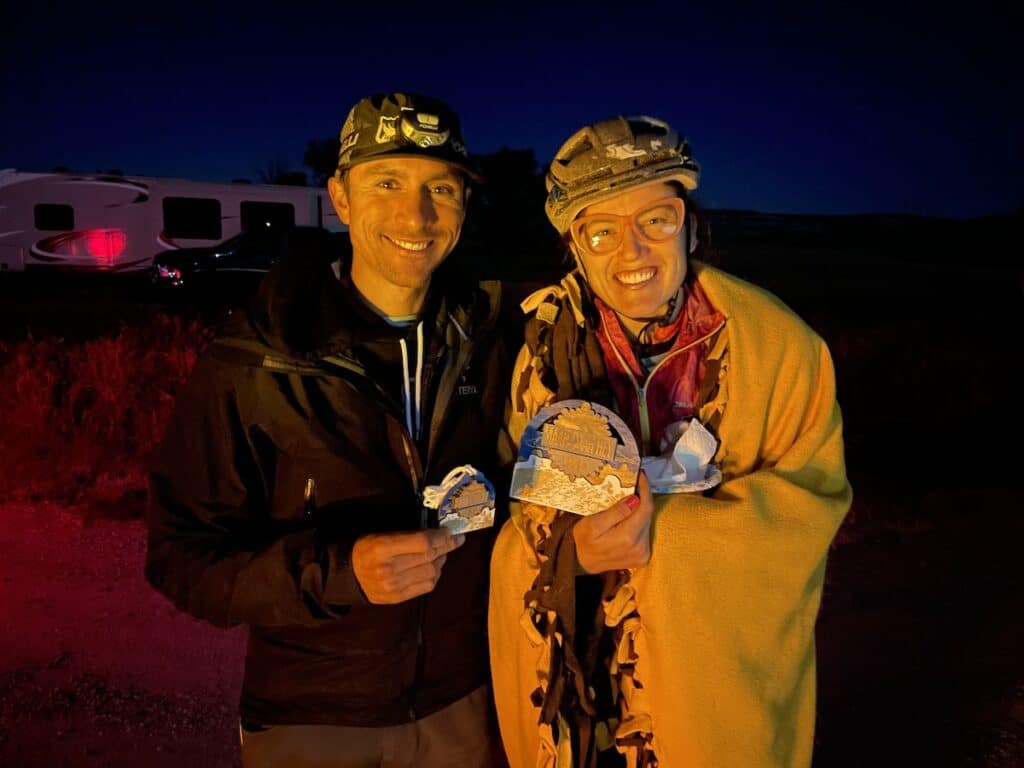
Sometimes I think back to the hollow shell version of me and all I want to do is hug her for how much pain she was in, but she kept showing up and doing the work not when it was convenient but when it was needed. And she brought me to this place where I finally feel grounded and at ease and adaptable. Back to the place where I can jump and figure it out on the way down.
The outdoors once served as a playground for me—during COVID it served as a reminder of all the things I could not do—and in reclaiming that space and that narrative through healing it brought me a great strength that I had not known. I thought this whole time I was getting outside that I was running from panic and pain but it turns out I was running towards joy.
About the Author

Kate is originally from South Dakota and has called many places home before finally arriving in Alaska almost 4 years ago. She somehow won the lottery by being able to work remote from a place she loves at a job that she loves. She’s been racing bikes on and off since 2013, she loves going uphill on skis and wishes she could take the lift down and only stays in shape for trail running in case someone asks her to go to the Grand Canyon. She thinks there is no such thing as too many sour patch kids, glitter, or cartwheels.
Share This Article!


